Project overview
Type
Book Cover Animation
Durations
22 seconds
Role
Motion Designer
Tools
Adobe Illustrator
Adobe After Effects
Concepts and inspiration
The Before the Coffee Gets Cold series has a unique and consistent visual identity — each cover features a variation of the same elements: a coffee cup, a cat, a clock, and a chair. I was drawn to the quiet symbolism of these objects and the emotional weight they carry in the story. Each cover captures a moment frozen in time — and I wanted to explore what happens when that moment starts to move. That’s why I decided to create an animation based on the very first book cover in the series. Rather than redesigning it, I used the existing composition as my base — and brought it to life through motion, sound, and narrative pacing.
Photo : Before the coffee gets cold books series in order (left to right)
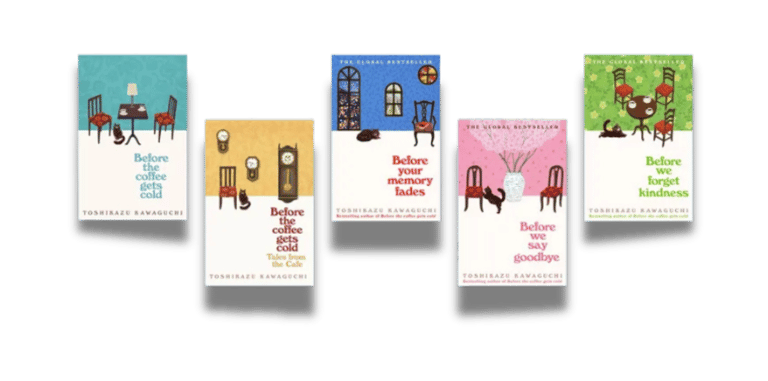

Design preparation
Before diving into animation, I wanted to set the emotional tone. My goal was not to spoil the story, but to evoke curiosity in people who haven’t read the book — and to spark recognition and emotion in those who have.
"I hoped that viewers who already know the story would be transported back, and those who don’t would feel intrigued enough to start reading."
Moodboard
I began by collecting visuals that captured the book’s atmosphere — quiet, nostalgic, a little surreal.

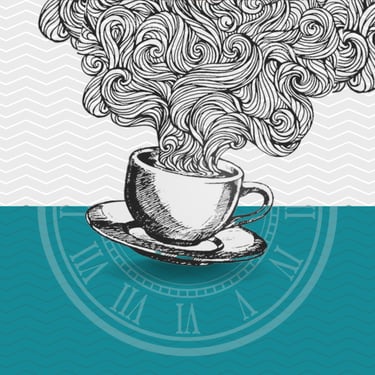

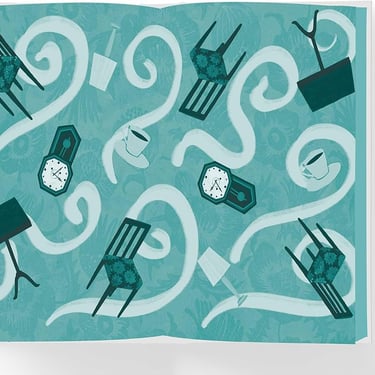


Concept sketches
To plan the visual flow and transitions, I created digital concept sketches that helped map out the key frames and narrative beats. These sketches helped define the rhythm, composition, and symbolism of the animation.
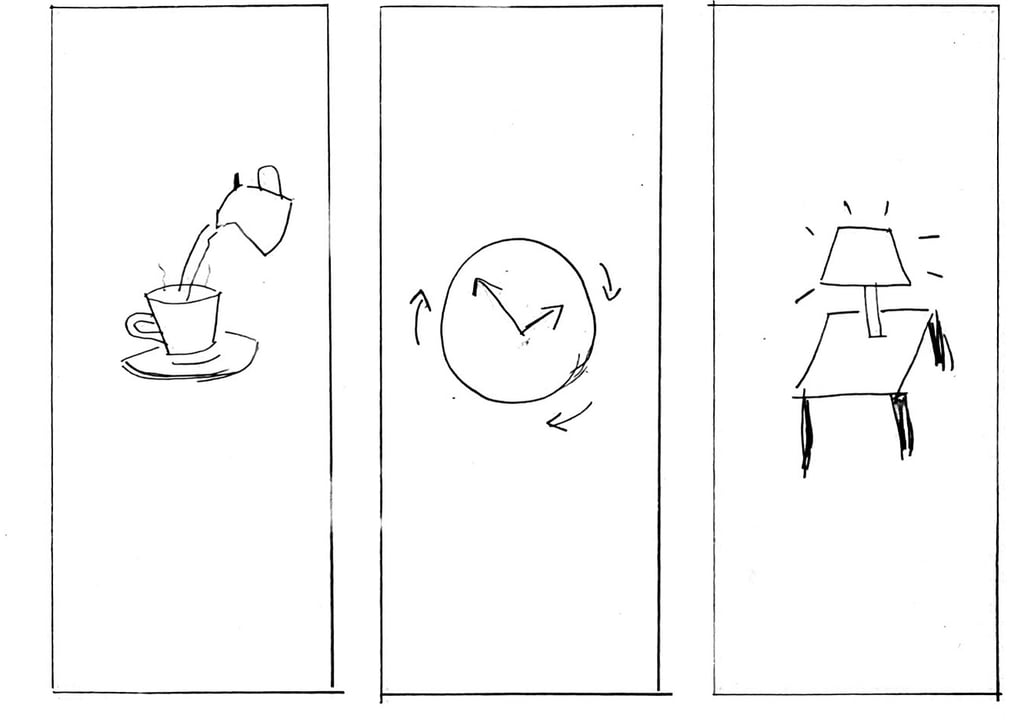

Assets preparation
Once the concept was clear, I moved into production:
Traced elements directly from the book cover in Adobe Illustrator
Exported the artwork as clean SVG layers
Organised assets and compositions to prepare for animation in After Effects
Ensured all components were ready for smooth transformation, masking, and timing-based animation
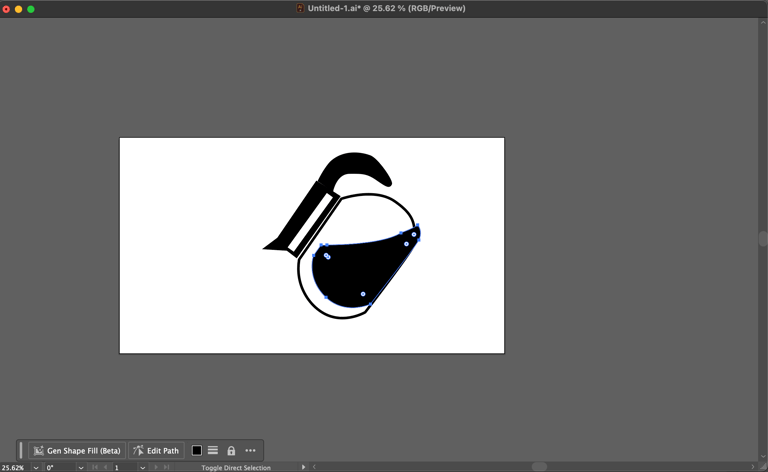
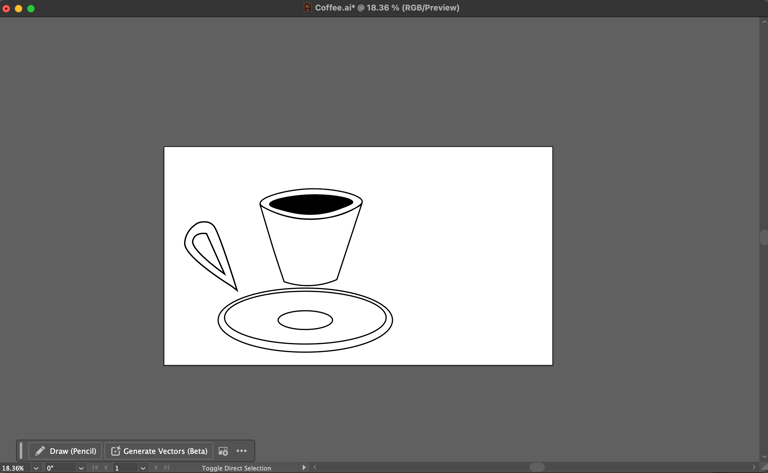


















Animation execution
To keep the workflow clean and organized, I created pre-compositions in After Effects — allowing for easier editing and precise control over each element.
In the main composition, I carefully timed all keyframes to ensure smooth transitions and rhythm throughout the sequence. I used easing and motion curves to create natural movement and flow between scenes.
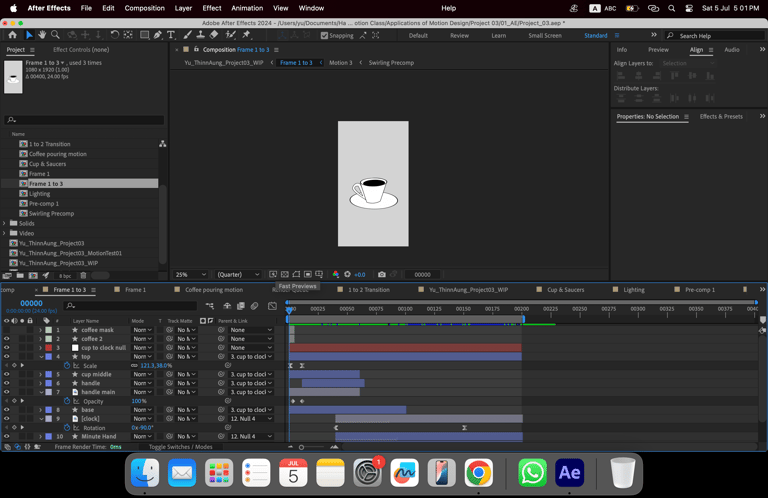

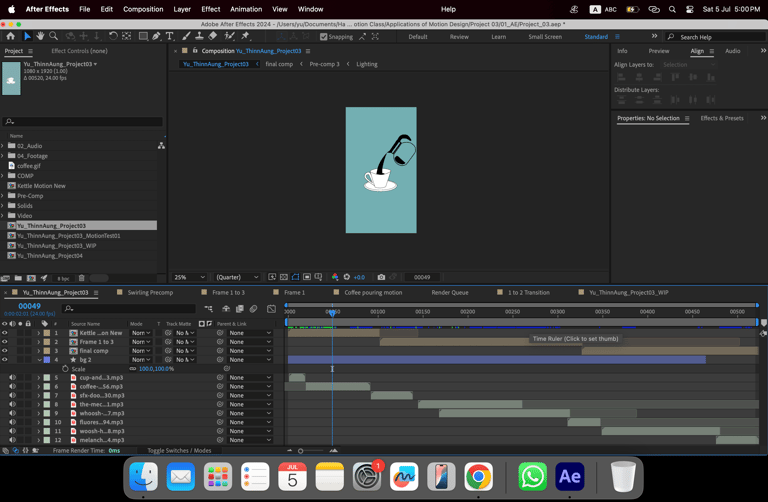

Developing the best flow
With my teacher's feedback and suggestions on how things should be, my design gradually evolved into a story—step by step. Below is my work in progress leading up to the final result.




Conclusion
This project was more than just animating a book cover — it was about capturing the emotional essence of a story through motion.
By staying true to the original design and adding subtle narrative movement, I was able to explore:
Visual storytelling using symbolism (clock, coffee, cat)
Transformation and flow in time-based media
A production pipeline involving Illustrator + After Effects, with thoughtful pacing and sound
It also taught me that even a short animation can hold powerful emotion — and that motion design can bring still visuals back to life in a meaningful way.
